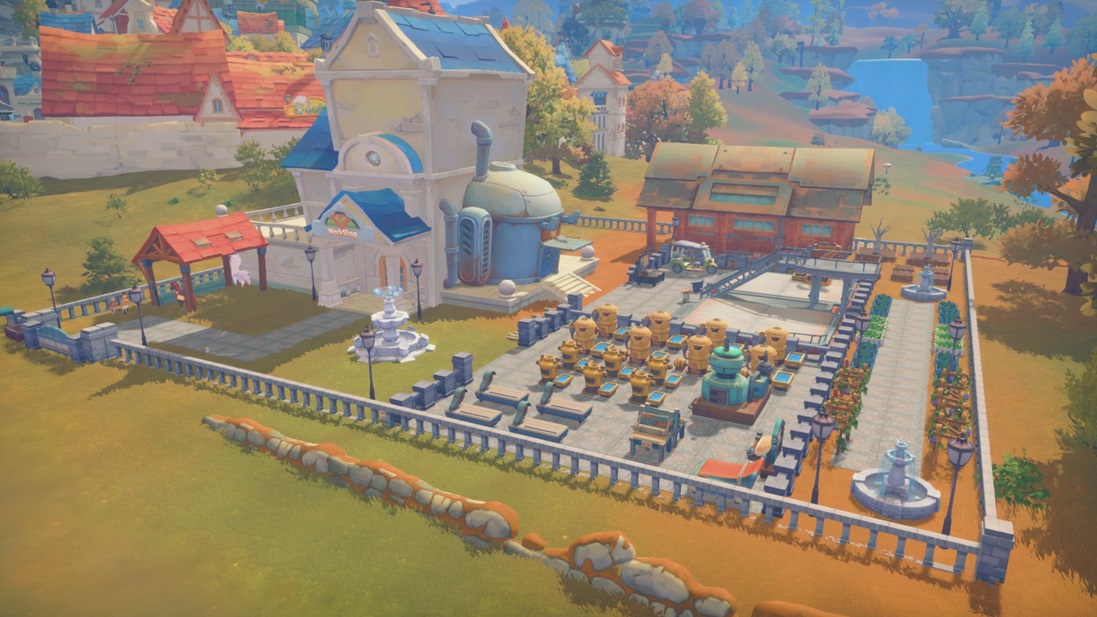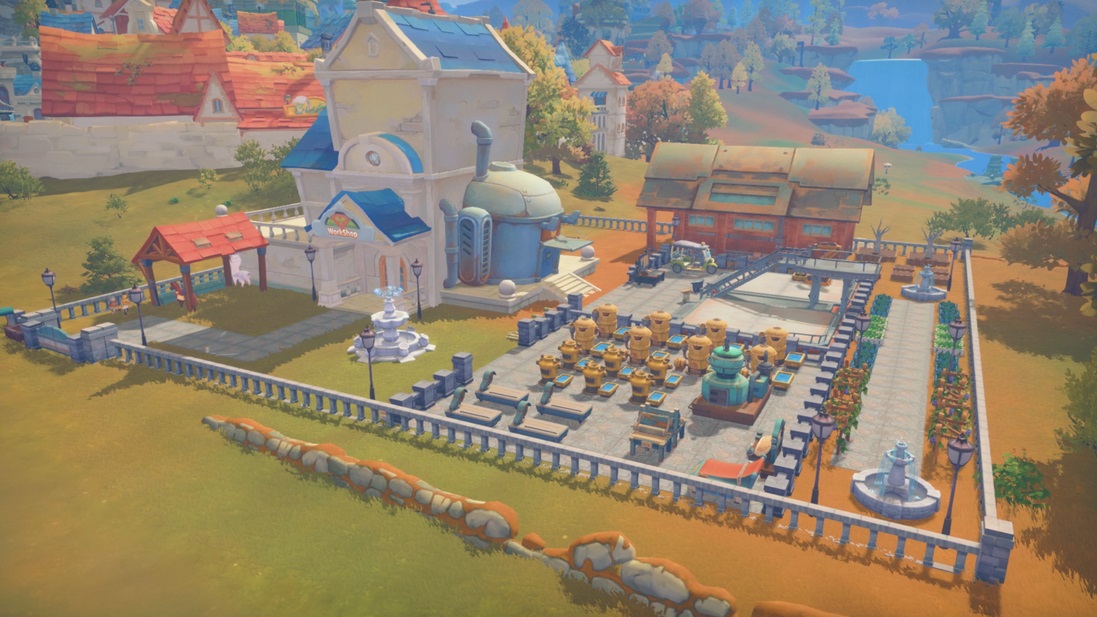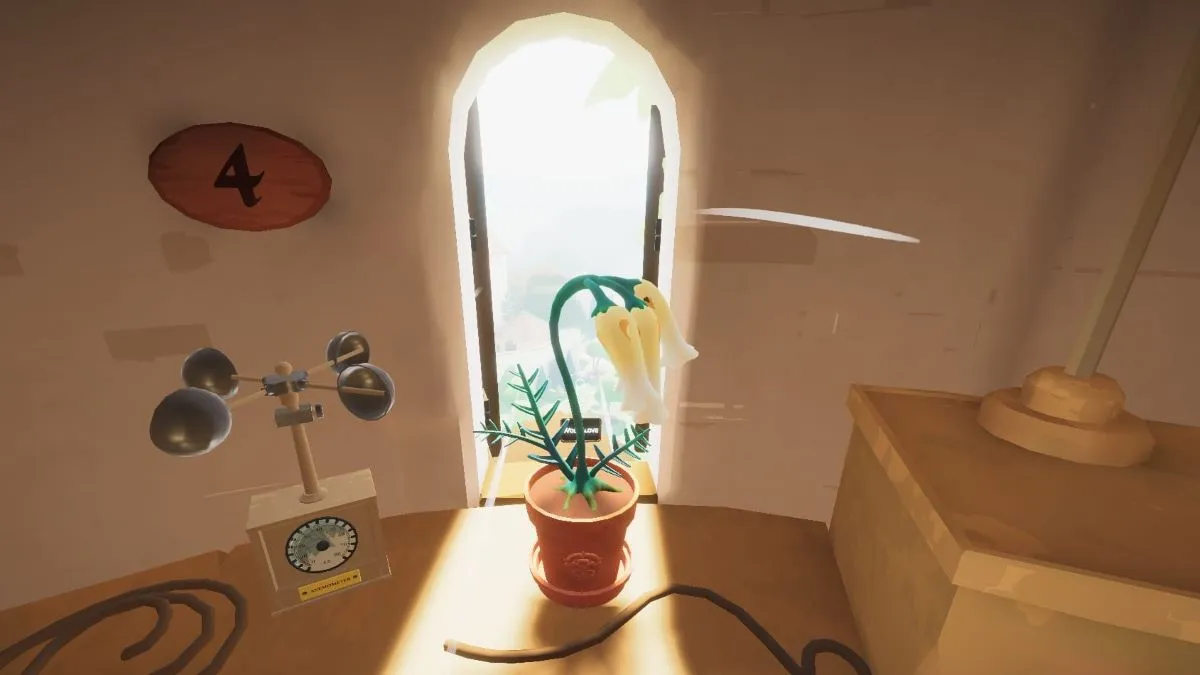A city of squandered potential
Ah, the farm-life sim. It’s become something of a staple in my gaming diet. You might remember me checking in with My Time at Portia back when it first entered Early Access. That was almost a year to the day, and the post-apocalyptic town of Portia sure has grown since then.
If you enjoy growing crops, mindlessly harvesting building materials, and trying to convince a collection of digital weirdos you’re worth spending time with, you might have a home away from home in Portia.

My Time at Portia (PC [reviewed], PS4, Switch, Xbox One)
Developer: Pathea Games
Publisher: Team17
Released: January 15, 2019 (PC), TBD (Console)
MSRP: $19.99
My Time at Portia is set in a vibrant town where you take on the role of the new builder after your absentee father leaves you in charge of his workshop. As a town builder, you can accept daily commisions from town hall to help the city at large as well as its many citizens. Commissions range anywhere from bringing the local farmer a few wooden boards to building a system of bus stops for the whole town.
While Portia does take a large amount of its DNA from games like Harvest Moon and Stardew Valley, farming is very much on the back-burner. I didn’t raise many crops in the close to seventy hours I spent with the game. The big focus here is on building. While you can use your workbench to make simple items like a woodcutting ax or a sword, larger projects require the use of a staging area in your yard. You also need blueprints to build these items, the first of which is a furnace for smelting ore into construction materials.
More elaborate construction projects like the system of bus stops I mentioned earlier are the milestones for progression in My Time at Portia. You can complete the construction of a bridge to gain access to a nearby island, or expand the bus stop network to reach the desert to the east, and so on.

Most of the materials you’ll need to complete the aforementioned projects aren’t just lying around. You’ll have to explore ruins to mine for ore, the first of which is located just inside Portia’s main gate. You can buy a weekly pass into the ruins which gets you a jetpack for traversal and a pair of special goggles to identify artifacts hidden within the bedrock, though you’ll need to bring your own pickaxe if you plan on leaving with any materials.
The actual process of mining is painfully dull. You can get enough material to last you a while by just hammering away at the walls, but there isn’t a whole lot to look at. You unlock various ruins to gather materials from as you progress, but they’re esentially all large empty rooms full of rocks. All that changes is what sort of ore and artifacts you might find inside. This is the sort of activity you can lose yourself in while watching Netflix on a second monitor.
If breaking rocks doesn’t sound all that entertaining, then Portia’s many hazardous ruins might be more your speed. These areas serve as replayable dungeons loaded with monsters for the slaughter. Typically you can find rarer materials in hazardous ruins, like electronic components, but you’ll want to make sure you head out stocked up on healing items and are armed to the teeth. You can craft swords and even more powerful guns at your upgraded work table.

In between ruin diving and crafting materials, you’ll find plenty of time to form relationships with the denizens or Portia. Fulfilling commissions for the townspeople or bringing them gifts can advance your standing with them. Eventually, you can even ask them to hang out or date.
Walking around and interacting with the colorful cast is entertaining, and that’s very fortunate. There is an absurd amount of downtime while working on building projects, mostly due to how long it takes some of your machines to craft the materials you’ll need. Late-game, I found myself merely waking up to refill my furnaces and skiver machines and then just going back to bed to pass the time.
If I could change one thing about My Time at Portia, I would cut most crafting times in half. Waiting on the few dozen carbon steel bars for larger construction projects was nothing short of excruciating.

I do love the art of this post-apocalyptic world. The towering ruins and bright colors evoke a Studio Ghibli vibe and simultaneously reminded me of The Legend of Zelda: The Wind Waker. If only my character could’ve had a talking lion boat.
Much like other games of this ilk, Portia has a handful of annual events on its calendar including a town-wide snowball fight and a martial arts tournament. All of these holidays are pretty simple but offer a nice break from the repetitive gameplay loop.
The town also has a handful of organizations to interact with. The Civil Corps are the go-to ruin divers and can even be hired to scavenge certain materials for you. The Research Center can look into making new blueprints, provided you bring them data discs from the local ruins. Then there’s the town church, which gives out materials for destroying the very same data discs in a message about organized religion that isn’t heavy-handed at all.

Truth be told, although everyone in Portia seems to attend church every Sunday, the technology-fearing house of worship is the least likable group in the game. I get it, machines caused the apocalypse, but I’m gonna need you to chill out.
My Time At Portia wears a lot of hats and subsequently doesn’t handle any of them particularly well. The world is bright and full of charm but waiting around for things to happen can get old pretty fast. Dungeon areas aren’t dished out to the player soon enough to keep them busy while waiting to finish projects for the town. As a result, Portia evokes a stressful feeling of constantly chasing gated content.
The world of Portia is full of promise but the time investment it requires makes it tough to recommend as is. A significant cut in crafting times across the board could go a long way toward making things feel more rewarding.
[This review is based on a retail build of the game provided by the publisher.]





